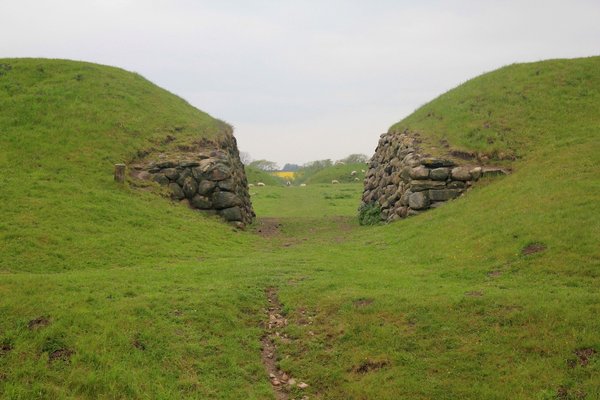Denmark
Viking Age Ring Fortresses
The Viking-Age Ring Fortresses are the remains of five monumental defense works that represent the stage of centralization of power in the kingdom of Denmark under King Harald.
The fortresses of Aggersborg, Fyrkat, Nonnebakken, Trelleborg and Borgring were constructed at strategic positions near important sea and land routes. The large infrastructure projects were executed within a short period in a precise and similar manner. The forts were only used for a few decades.
Community Perspective: Astraftis has provided the ultimate review for this site, covering all locations in detail. Other reviewers are less enthusiastic about these ring fortresses, of which Trelleborg is the easiest one to access.
Site Info
Official Information
- Full Name
- Viking-Age Ring Fortresses (ID: 1660)
- Country
- Denmark
- Status
-
Inscribed 2023
Site history
History of Viking Age Ring Fortresses
- 2023: Inscribed
- Inscribed
- 2018: Revision
- Includes former TWHS The Trelleborg Fortresses (2010-2018)
- 2018: Upstream Process
- Request, may not have been prioritized due to Denmark being a High Income Country.
- 2015: Deferred
- As " VIKING MONUMENTS AND SITES / The Trelleborg fortresses, Denmark"
- Type
- Cultural
- Criteria
- iii
- iv
Links
- UNESCO
- whc.unesco.org
- Related
-
- en.natmus.dk — Danish National Museum
All Links
UNESCO.org
- whc.unesco.org — whc.unesco.org/
Related Resources
- en.natmus.dk — Danish National Museum
Community Information
- Community Category
- Archaeological site: Viking
Travel Information
Copenhagen Hotspot
Recent Connections
-
Viking Cultural Route
Fyrkat, Trelleborg (Link)
-
Vernacular architecture
"From a typological point of view, the…
-
Uncovered using Lidar
"The landscape context has been documen…
Connections of Viking Age Ring Fortresses
- Geography
-
-
North Sea
Aggersborg is "directly on the Limfjord", on an "E-W sailing route, the closest linking the North Sea and Baltic". (90 km to North Sea, 70 km to the Kattegat).– "The Limfjord had open waterways at both ends, which meant that it was the quickest passage between the North Sea in the west and the Kattegat in the east." (Nomination file, p. 62, 65)
-
Isostatic Rebound
"The landscape surrounding the Trelleborg has changed considerably since the Viking Age, due to a land rise known as post-glacial rebound, affecting this part of the world, and the previous swamp has shrunk to a small bog, while the two rivers of Vårby Å and Tude Å, has reduced to narrow streams."See en.wikipedia.org
-
- Trivia
-
-
Replica in Mini-Europe
Trelleborg (Link)
-
Discovered from the Air
"Trelleborg was first recognised as a Viking fortification when the National Museum commenced excavations in 1934 (...). What had been originally envisioned as a small-scale investigation ended up lasting 9 years, up until 1942. By this time most of the area had been investigated, and the outer defences had been discovered in 1936 on an aerial photograph. Up until then, the outer earthwork had not been known as it was no longer visible in the landscape."See en.natmus.dk
-
Depicted in Mizielinska Maps
probably AggersborgSee i.pinimg.com
-
- History
-
-
Buried treasures
"In 1775 the first known silver hoard from Nonnebakken was discovered and given to the museum." – "Most striking among the artefacts from Nonnebakken is a series of finer silver objects. These (...) can be assigned to a total of five hoards of coins and jewellery. (Nomination file, p. 158, 162) -
Neolithic age
Trelleborg: "In addition to evidence of the actual fortress and the settlement, there were also Neolithic remains in the form of refuse pits and possibly parts of a causewayed enclosure of Sarup type (Neolithic, c. 3000 BCE)" (Nomination file, p. 166)
-
Sieges and Battles
"Trelleborg shows clear evidence of an attack or siege against the fortress." (Nomination file, p. 68) – "Weapons such as iron axes, arrow points and parts of shields were also found and there are strong indications of a battle and castle attack taking place at some point during the castles' short lifespan. 19 arrowheads were found buried deep into the ramparts and gates. Combined with the three mass graves, this is taken as solid evidence. The slain soldiers were quickly buried in the mass graves, many of them showing deep cuts and lethal wounds from close combat weapons." (Wikipedia)
-
- Architecture
-
-
Earth Architecture
"fortified circular earthen ramparts clad with timber" – "Construction of these permanent defensive earthworks involved the massive use of turf (in blocks and strips), local loam, earth and clay, combined with prolific quantities of wood (stones were used in some cases, e.g. in gateway walls at Trelleborg)." – "The nominated property comprises a series of five archaeological sites (earthworks) which, overall, possess a general state of conservation that is good." (Nomination file, p. 28, 52, 263) -
Vernacular architecture
"From a typological point of view, the nominated property may be categorised under 'archaeological heritage', 'military properties' and even, when considering the important evidence of a traditional Nordic building typology symmetrically-ordered within the fortresses, 'vernacular architecture'." (Nomination file, p. 194)
-
- World Heritage Process
-
-
Extension Supported
"Exploring the possibility of extending the serial property to include the two similar Scanian fortresses, should future research and sufficient evidence justify including these archaeological sites." (Decision 45 COM 8B.16) -
Extended from original TWHS
The Trelleborg fortresses - 2010-2018 – "In January 2009, Viking-Age Ring Fortresses of Aggersborg, Fyrkat and Trelleborg were included on Denmark's UNESCO Tentative List of candidate World Heritage sites. Nonnebakken and Borgring were not part of the application in 2009 for different reasons: Borgring was not identified as a member of the group of Viking-Age Ring Fortresses until 2014 and Nonnebakken was in 2009 thought to be almost destroyed. Later excavations at both sites have however, changed the situation. Consideration of an application for the inclusion of Viking-Age Ring Fortresses on UNESCO´s World Heritage List therefore necessitates all five fortresses – the group or system – to be nominated." (Nomination file, p. 143)
-
- Religion and Belief
-
-
Benedictines
Nonnebakken: "In the 12th century CE a Benedictine convent was created on the site." (AB Ev) -
Introduction of Christianity
"The fortresses (...) testify to the early stages of state formation and socio-political transformations of the late 10th century CE in the Danish kingdom, including the conversion to Christianity, which eventually triggered the progression of statehood and Christianity in the whole of Scandinavia (...)." (OUV) – The fortresses "may also be seen as a symbolic expression of a cultural shift that the Danish kingdom underwent upon King Harald's conversion to Christianity". (AB Ev) – "Graves at Trelleborg evidence the transition with both pagan and Christian burials evident from the short life of the fortress (c. 975-990s CE)." (Nomination file, p. 119) -
Nunneries
Nonnebakken: "The fortress site, presumably then still royal property, was occupied by a Benedictine nunnery in the second half of the 12th century, hence the name Nonnebakken ["Nun Hill"]." (Nomination file, p. 158)
-
- Human Activity
-
-
Viking settlements
"The function of the fortresses can only be inferred. Finds from excavations conducted at the archaeological sites include crafts and items of daily life activities, as well as grave goods and death paraphernalia" (AB ev)
-
- Constructions
-
-
Moats
Trelleborg: "The moat of the inner rampart is c. 17 m wide and 4 m deep. It was not filled with water but traces of a number of posts have been found at the bottom of the moat, which may have been pointed though they could also just be evidence of simple planking." (see link)See en.natmus.dk
-
Cemeteries
"Cemeteries were found outside the circular rampart at Fyrkat to the northeast of the fortress, and at Trelleborg inside the outer ward. The graves at Trelleborg show evidence of pagan and Christian burials. At Fyrkat, the burials are considered pagan." The cemeteries are within the boundaries of the two component parts. (AB Ev)
-
- WHS on Other Lists
-
-
Viking Cultural Route
Fyrkat, Trelleborg (Link)
-
Ramsar Wetlands
Aggersborg: "Løgstør Bredning, a 436 km2 wetland site of international importance (designated under the UNESCO Ramsar Convention, and which also covers the fortress in its eastern part)" (Nomination file, p. 73)
-
- Timeline
-
-
Built in the 10th century
Constructed between about 970 and 980 CE (AB ev)
-
- WHS Hotspots
-
-
Copenhagen Hotspot
Trelleborg: Hourly direct trains to Slagelse (1h15), from where you can take a taxi, bike or hike to the site.
-
- Science and Technology
-
-
Experimental Archaeology
"At Trelleborg and Fyrkat, outside the boundaries of the nominated property (outside the then scheduled protected areas), reconstructions of longhouses of the so-called ‘Trelleborg-type’ were built for the purposes of experimental archaeology and interpretation – extensively informed by archaeological evidence revealed in excavations" (Nom file) -
Uncovered using Lidar
"The landscape context has been documented using topographical and historical maps, LiDAR images and computer-based models." (AB Ev) – "Modern non-intrusive survey adds to our understanding at various scales, from high-definition LiDAR to constantly improving ground-based geophysical techniques." (Nomination file, p. 56) – "In 2014, as a result of landscape-scale LiDAR survey specifically targeted at Viking-Age Ring Fortresses, Borgring was identified as probably being a Viking-Age ring fortress." (Nomination file, p. 132)
-
Recently discovered
Borgring: "Senior sergeant in the Danish Airforce, Valdemar Ryhl, first spotted the dark shadow in the ploughed field in 1970. He contacted the National Museum in Copenhagen suggesting that the ring-shaped shadow was a ring fortress from the Viking-Age." (Nomination file, p. 171)
-
Archaeological potential
"The boundary of component part 5 includes the fortress and the area around Borgring, reflecting future research potential." (AB Ev) – "Large parts of the fortresses remain unexcavated and have high archaeological potential." (Nomination file, p. 31, 185)
-
- Visiting conditions
-
-
Archaeological Site Reburial
"Archaeological investigations, beginning as early as the 1930s, have cumulatively advanced the physical protection at Aggersborg, Fyrkat and Trelleborg – by covering and marking the eroded remains of ramparts(...)." At Aggersborg, Fyrkat and Trelleborg, "the original remnant of circular rampart remains buried beneath a protective and stable layer of earth and turf that was placed as a partial reconstruction to mark out the structure in the landscape for conservation and interpretive purposes." (Nomination file, p. 263-264, 266)
-
News
No news.
Recent Visitors
Visitors of Viking Age Ring Fortresses
- Adrian Turtschi
- Afshin Iranpour
- Alexander Lehmann
- Ammon Watkins
- Ana Lozano
- Anna Wludarska
- Argo
- Ask Gudmundsen
- Astraftis
- Atila Ege
- BaziFettehenne
- Bin
- Caspar
- Christoph
- Christravelblog
- ClaraHH
- Clyde
- Cobaltrage
- Csaba Nováczky
- Cyberczar
- Dagmara
- Daniel Chazad
- David Berlanda
- Dimitar Krastev
- Dorejd
- Dr. Caligari
- Echwel
- edstar500
- Ellen Nielsen
- Els Slots
- Eva Kisgyorgy
- Feldhase
- Filip Murlak
- Flexiear
- Frederik Dawson
- gautamiyer23
- George Gdanski
- Hadrianus
- henrik_hannfors
- Hubert
- Ian Cade
- Ivan Rucek
- Jakob F.
- Jan Korpeg
- Janos
- Jarek Pokrzywnicki
- Jay T
- Jean Lecaillon
- Jesse S 2010
- Jezza
- Jonas Kremer
- Jonas Martinsson
- Karito Vies
- Kbecq
- Knut
- Kurt Lauer
- Liamps91
- Lisu Marian
- Lithobates
- Loic Pedras
- Luboang
- Lucio
- Luis Filipe Gaspar
- Lukasz Palczewski
- Maciej Gil
- marcel staron
- Martina Rúčková
- Matthewsharris
- MH
- MichaelH
- Miloš Tašković
- Monica66
- nan
- Nasebaer
- Nihal Ege
- Patrik
- Paul Schofield
- Peter Lööv
- Philipp Peterer
- Piotr Wasil
- Rachel Perkins
- Ralf Regele
- Randi Thomsen
- Roger Ourset
- Roman Bruehwiler
- Roman Raab
- Rudegirl
- Sandra!
- serghei.belous
- Simonh
- SirLoydd
- sncjob
- Squiffy
- Stanislaw Warwas
- Stijn
- Svein Elias
- Szucs Tamas
- Tamara Ratz
- Taotao Chen
- Tarquinio_Superbo
- Thomas Buechler
- Tinuszke
- Tom Flaten
- tony0001
- triath
- Truls Brekke
- Tsunami
- Valentina
- Vanessa Buechler
- Van Hung
- Walter
- Westwards
- Wimmy
- Wojciech Fedoruk
- Zoë Sheng
Community Reviews
Show full reviews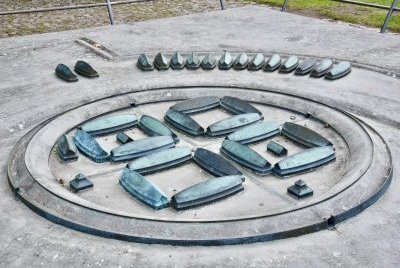
I visited two of five inscribed Viking Ring Fortresses, the unknown Borgring and the famous Trelleborg on my short trip to Denmark. On the way from Copenhagen to Stevn Klint, just outside the city of Koge, I made a brief stop to see Borgring which was just next to the highway exit. After parked my car on the empty carpark, I found out that I was the only soul, no staff, no entry restriction, so I just entered to see something equally empty! Borgring was like a big playground for kids with big circle ring sandbox. There was nothing to see, no hill, no turf, only some metal or wooden frames and columns doting the whole place. My thought at that moment was “Is this a joke?” before walked back to my car.
Few days later when I drove back from Odense, I made a detour to Trelleborg. At first, I want to skip it after seeing Borgring, but after searching some photo in internet, at least Trelleborg should be more interesting. When I reached Trelleborg, the museum was closed on that day, but thanked to one comment in google review, the fortress could be visited every day via small passage next to museum building. The first thing I saw was the long wooden house, I assumed that this building should be a reconstruction of Viking houses that once located inside and surround the fortress. The boat shaped building and roof line were really interesting. Then I walked …
Keep reading 0 comments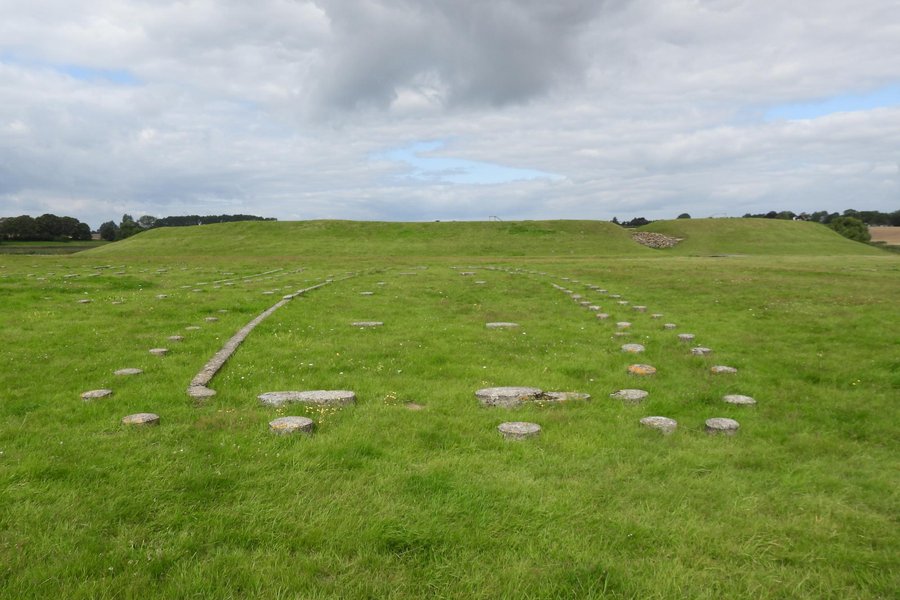
There may have been a time when viking sites were underrepresented on the world heritage list but by now I think they are already overrepresented. Firstly the viking period is a rather limited era and has already 6 sites or more on the list. I haven't visited all of them but I have visited Jelling and Hedeby (and St. Kilda but there the Viking connections is not central). While I found both visits worthwhile and interesting, in both there is very little to see and they need a lot of explanation and imagination and I am not so sure at all that they really need to be on the list.
The other important viking places are Birka where seems vey little original to see but a few tumuli, and also the sites on Greenland and L'Anse aux meadows are more interesting about the early exploration of the western hemisphere than about their scant remains.
So there seems no need to add another site that doesn't add much and is possibly even less interesting. When I travelled around Denmark I felt that visiting Jelling should be suffice for viking sites since it is the most important viking site and already very modest as a WHS. But on the way from Kopenhagen and the eastern island the Jutland I travelled through the nice city of Odense where I stayed for one night to explore the old town and the Andersen connection (I found the new museum/park about him less interesting …
Keep reading 0 comments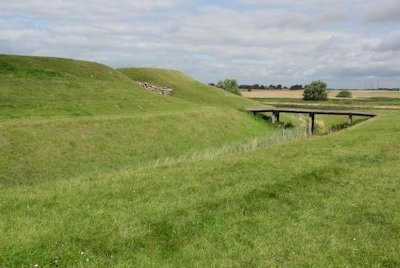
We know the Vikings mostly for their formidable sailing and discovery of new worlds, but these five fortresses show them as nation builders and Christianizers of the Danes. I choose Trelleborg for my visit and will describe getting there on public transport and the overall visitor experience as I found it in August 2023. Regarding the question of whether this is WH material, I did some desk research as well.
The Visit
Trelleborg can be easily done as a day trip from Copenhagen Airport. There are hourly direct trains to Slagelse (1h15) and additional connections when changing at Copenhagen Central Station. The train also makes a stop in Roskilde, so you could take in another WHS along the way. Instructions for getting to the site by bus from Slagelse station are complex and the rides are not too frequent (and not exist at all during school holidays). So you have to take a taxi to cover the final 6 km, or walk. The latter is doable (I walked both ways), but not very enjoyable as you mostly walk on the shoulder of a B-road with frequent traffic.
I arrived around 10.40 and found a fair number of cars already in the sizeable parking lot. It seems to be a popular destination for families on holiday, and there were foreign visitors from the Netherlands, Belgium and Italy. The summer entrance fee is 100 DKR, which converts to a fairly high 13,50 EUR. The income seems to mostly go …
Keep reading 0 comments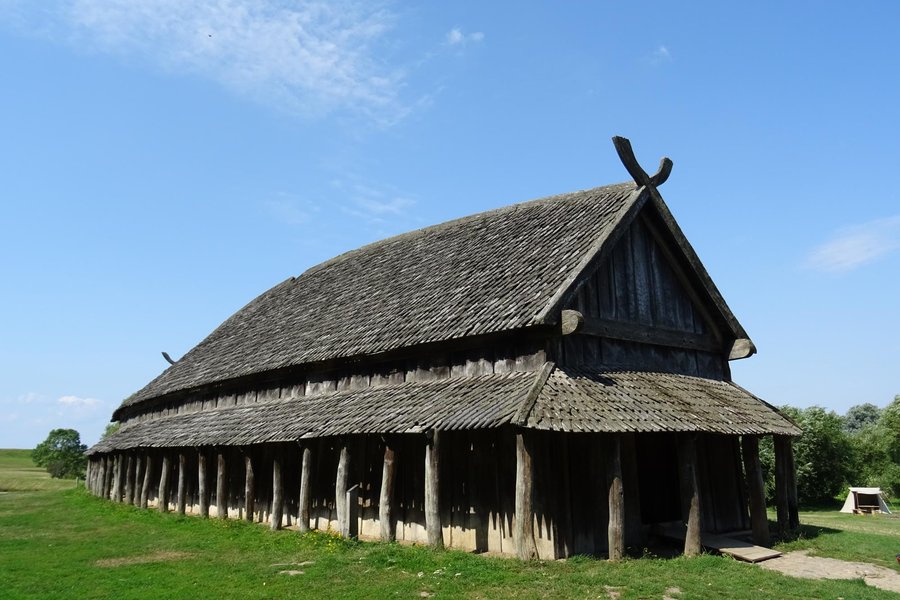
Viking ring fortresses (ringborge) might have been the eventual factor that prompted my all-Denmark trip by rental car in August 2021 (besides massive listening to "Viking neo-folk ambient music" in the previous months as a power-background while working...). Their simple, geometric shapes emanate some mystery, and, somewhat paradoxically, they are at the same time unobtrusive landmarks and witnesses of a golden Viking age of expansion and consolidation.
Introduction
As of now, there are five registered ringborge in Denmark, and they are all part of this upcoming (2022) nomination. They are neatly laid out as a string that binds together the whole country from the islands to the continent: Borgring on the eastern coast of Sjælland, Trelleborg on the Storebælt, Nonnebakken in Odense on Fyn, Fyrkat at the end of the Mariager fjord in Northern Jutland, and Aggersborg overlooking the Limfjord from the island of Vendsyssel-Thy (the northernmost part of Jutland - yes, it's an island!). There might be some connection also to the Swedish Trelleborg, which would then be a natural continuation of this string towards the east, on the other side of the Øresund, but as far as I have understood still nothing has come out in that sense. Such an arrangement is not haphazard, of course, but, then as nowadays, considering also Jelling (which fits between Nonnebakken and Fyrkat), it follows the geographical and political backbone of Denmark: remarkably, all ring fortresses lie in the vicinities of the major motorway routes (E20/E45) traversing the country, …
Keep reading 0 comments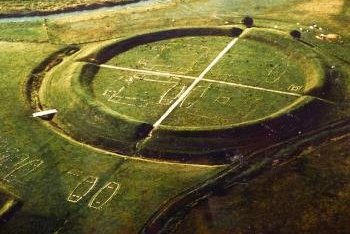
I visited this tWHS in July 2016 on the way from Jelling to Roskilde. I was very lucky to visit when the largest Vikings festival of Scandinavia was taking place. Viking sites are not the most iconic sites on the list and usually it is quite hard to appreciate the few remains without any context. Usually I'm not to keen on visiting sites when there is a local feast or festival taking place but on this occasion I really enjoyed it. There were several tents next to the remains of the Trelleborg fortress. These were made out of animal hides and all those taking part during the 4 day festival lived in conditions which most probably were simalar to those of their ancestors. Children played with all sorts of traditional games with leather or wooden toys or simply played bare foot in the mud close to the mounds. Finding this atmosphere at about 8am in the morning instead of another empty viking site really helped to appreciate the site proper. There is a small museum with one of the most important remains - the Trelleborg viking shield - as well as a reconstructed longhouse. The latter was built in 1942 as a model of the longhouses inside the Trelleborg fortress. Although the reconstruction is not an accurate rendering it still serves its purpose of shedding some light on the exterior and interior elements of a longhouse. The Trelleborg longhouses were almost identical - 30 metres long featuring vaulted walls made …
Keep reading 0 comments
